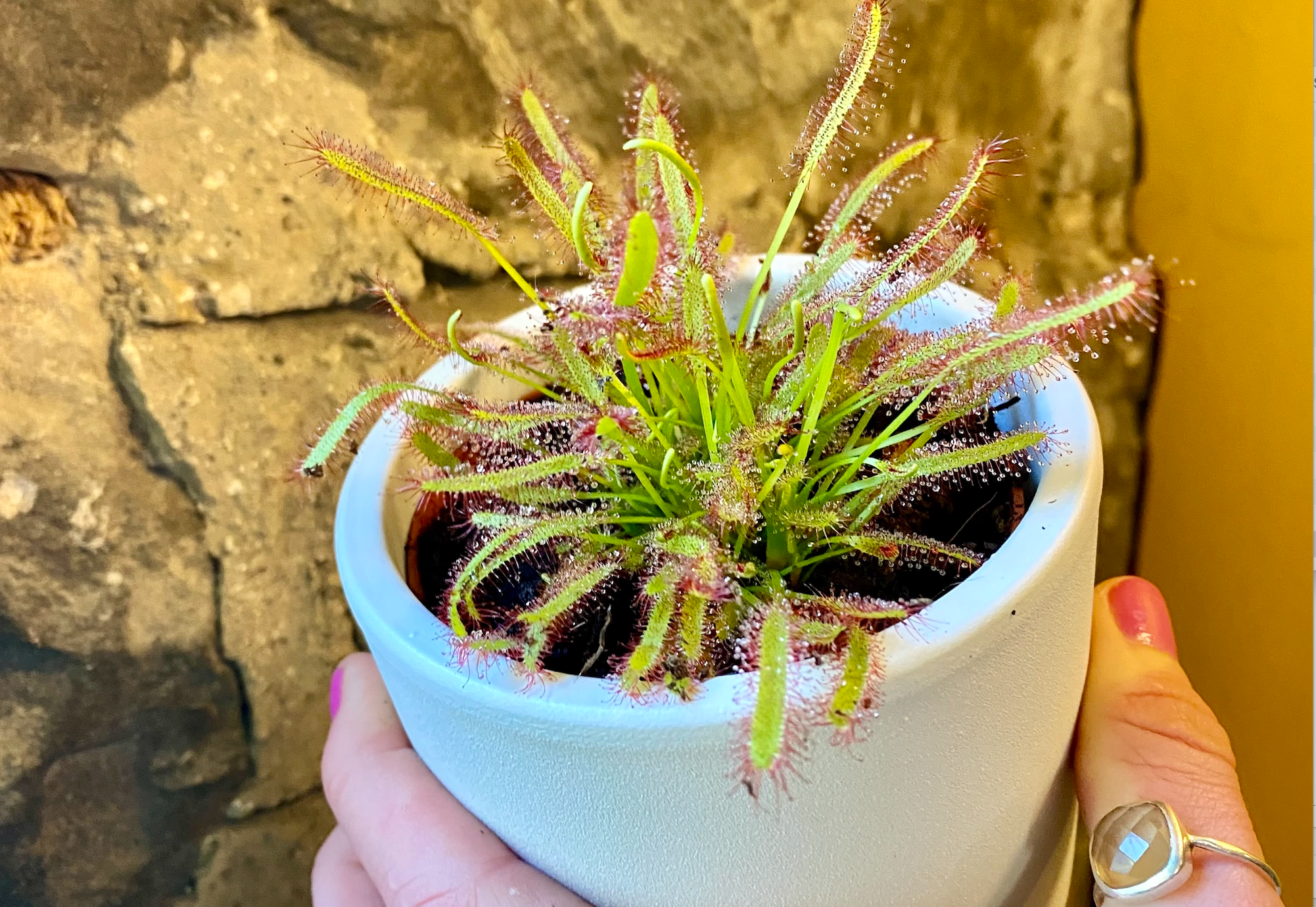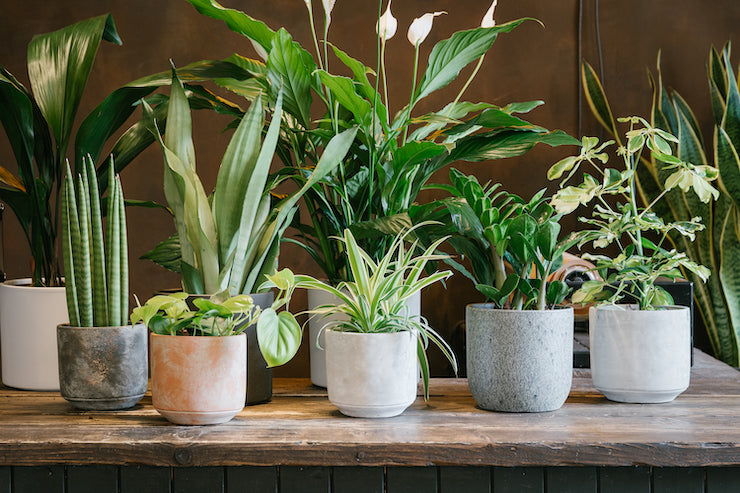
The Fascinating World of Carnivorous Plants
Carnivorous plants can be found all over the world. Dwelling in swampy environments with poor soil, these fascinating plants have evolved to find nutrients elsewhere by trapping unsuspecting insects, small amphibians and even small rodents in all kinds of cunning ways including snap traps, pitfalls and sticky traps.
Let's take a look at all their weird and wonderful forms and why they have earned the title Carnivorous Plants!
Dionaea muscipula
If you have heard of Carnivorous plants you will have heard of Dionaea muscipula, commonly known as the ‘Venus Fly Trap’. This type of trap has developed ‘jaws’ on their leaves that snap shut around their prey when triggered by movement. Within these jaws lie three trigger hairs and, if two or more hairs are brushed against, the trap is activated and will snap shut. As the insect continues to struggle, the trap will tighten, securing its prey. The plant will then produce a digestive enzyme to absorb the fly over a two-week period.
Although immobile, Venus Fly Traps do not simply sit and wait for their prey to come to them and have cunningly evolved to ensure they look as tasty as possible by camouflaging the inside of their jaws with mottled pink colouration to look like rotting meat. Alongside this, they produce a sweet nectar at the base of their teeth to lure insects closer.
Catching and digesting flies is an energy draining process and each leaf is only capable of two or three feeds before it dies off. For this reason, the teeth on these traps are cleverly spaced out enough to let small flies escape, whilst imprisoning larger specimens to ensure only the most nutritious flies are absorbed and no energy is wasted. These plants have adapted to periods of starvation and therefore only require several flies a year to survive. If overfed, they will stop producing their signature jaw shaped traps and will stop being carnivorous.
If you have a Fungus Gnat problem we’re afraid Venus Fly Traps won’t solve it!
Dionaea muscipula thrive in the brightest light possible and should be placed in full sun. They are native to subtropical wetlands so like to stay fairly moist. Dionea muscipula should be given a period of rest in the winter, however can be kept in a saucer of water during the summer. They prefer soft, or rainwater and should always be watered from below. Venus Fly Traps dislike being root bound so ensure that you repot them every year or so.
Nepenthes
There are over 100 known species of Nepenthes that can be found across Southeast Asia, Madagascar and Australia. These plants come in epiphytic and climbing varieties and grow tendril-like stems to latch themselves onto other plants. Nepenthes are commonly referred to as 'Pitcher Plants' or 'Monkey Jars' due to the colourful lidded cups they have developed to catch their prey insects, reptiles and even small mammals for nutrients. In areas where insects are scarce some varieties of Nepenthes have even evolved to gain nutrients from other forms of organic matter such as the faeces of birds and other small mammals.
These traps are passive and therefore lure their prey into their pitchers by producing a sweet nectar paired with colours resembling rotten meat. The unsuspecting insect then slips off the rim of the cup and into the pool of digestive enzymes below. Due to the depth of the cup, downward pointing hairs and slippery walls, their prey are unable to climb out and drown in the fluid within the pitcher. Around 3 months after feeding the pitcher will die back. The lid of the pitcher shuts to prevent their meal from escaping and to stop rainwater from diluting the digestive enzymes.
Nepenthes should be placed in very bright, in-direct light as direct sun can scorch the pitchers. Native to environments that have high humidity these plants should be misted frequently during the week, everyday if possible and the soil should be kept moist during the summer months. The pitchers will naturally shed about once a year, however if they are frequently drying out this is due to a lack of humidity. Nepenthes varieties have different growing rates. Fast growing types require repotting once a year, whilst slow growers should be repotted every two or three years. Much like the Dionaea muscipula, Pitcher Plants should only be fed live insects rarely and only one at a time!
Sarracenia
Sarracenia are native to North America and can be found living in swamps and peat bogs. Commonly known as 'Pitcher Plants' and 'Trumpet Pitchers' they devour their prey in the same way as Nepenthes using their tubular forms to trap unwitting insects. Unlike Nepenthes, these plants do not contain downward pointing hairs, however their leaf height and shiny internal walls prevent bugs from climbing out once they have fallen into the trap. In the base of the pitcher sits a digestive fluid that will slowly break down the insect for the plant to absorb its nutrients.
The brighter the light the bolder the colour of the Sarracenia pitchers so place them in a bright spot. These plants can withstand direct light in the morning and evening. During the growing season Sarracenia can be kept in a saucer of water and the soil should be kept evenly moist. Mist frequently. Sarracenia do die back over the winter months and should be allowed to brown completely before cutting back to allow the plant to absorb as much nutrients as possible.
Drosera capensis
If you have ever had a problem with fruit flies or fungus gnats you will have heard of yellow sticky paper. Introducing nature's solution to fly paper, the Drosera capensis. Native to the Cape in South Africa, these plants are commonly known as a 'Cape Sundew' due to the clear dew-like liquid that lines their leaves . They catch small flies and gnats which are attracted to their bright colours and sweet smelling nectar. Drosera produce a sticky, mucilage substance on the top of the tiny red hairs that line their leaves. This particular type of Carnivorous Plant is mobile and, once stuck, the struggling movement of their prey triggers the plant to tightly wrap its leaves around the insect. Digestion will take around six hours.
Keep the soil evenly moist and mist the plant frequently. Drosera capensis can withstand some direct light in the mornings and evenings. These carnivorous plants do not need feeding and will happily catch household flies and spiders for nutrients. As movement triggers these plants to begin the digestion process and therefore they should only be fed live insects in our homes and in the wild! Repot every three or four years using a Carnivorous compost.
There are loads of fascinating varieties of Carnivorous Plants, but here are just a few of our favourite varieties. Now you know the fascinating way in which they work so why not add one to your collection?



